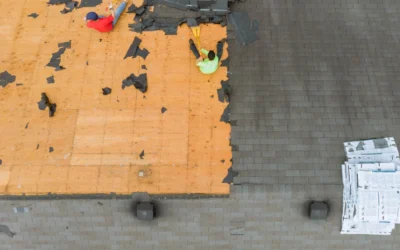Replacing your windows is a big investment that requires careful timing, especially in Wisconsin where weather can be unpredictable. Many homeowners wonder when they should schedule this important home improvement project to get the best results without disruption.
The best time to replace windows in Wisconsin is typically during late spring or early fall when temperatures are mild and precipitation is less likely. These moderate seasons provide ideal conditions for installation while minimizing exposure to extreme temperatures. Fall is frequently considered optimal for window installations in Wisconsin, though booking early is essential to avoid seasonal delays.
While you might be tempted to schedule window replacement during summer for its longer daylight hours, spring offers particular advantages. Spring’s mild weather and extended daylight create excellent conditions for installers to work efficiently without the challenges of winter’s cold or summer’s intense heat. Plus, replacing windows during early spring or fall means fewer bugs will enter your home during the installation process.
Factors Affecting Window Replacement Timing in Wisconsin
Choosing when to replace your windows in Wisconsin requires careful consideration of several key elements that can impact both installation quality and long-term performance. Weather patterns, seasonal conditions, and the current state of your windows all play critical roles in this decision.
Wisconsin’s Climate Considerations
Wisconsin’s distinct four-season climate creates specific windows of opportunity for replacement projects. The state experiences temperature extremes ranging from below-zero winters to humid 90°F summer days, which affects both installation materials and methods.
Spring (April-May) offers moderate temperatures ideal for caulk and sealant curing, though frequent rain showers can cause scheduling delays.
Summer provides consistent warm weather, but high humidity levels can sometimes affect wood frame expansion and contraction during installation.
Fall (September-October) presents perhaps the best conditions—mild temperatures, lower humidity, and typically less precipitation—allowing for optimal sealant setting and minimal thermal expansion issues.
Winter installations, while challenging, can be surprisingly advantageous as contractors are less busy, potentially offering better pricing and more flexible scheduling options.
Seasonal Weather Impact on Installation
Wisconsin’s seasonal variations significantly influence installation processes. During winter months, special procedures must be implemented to prevent heat loss and protect materials from extreme cold.
Installation crews typically work on one window at a time in winter to minimize heat loss. Cold temperatures below 40°F can affect sealant application, requiring heated spaces or specialized cold-weather products.
Spring and fall offer ideal 50-70°F temperature ranges for standard installation materials to perform optimally. However, spring rain can delay exterior work and affect scheduling reliability.
Summer allows for efficient installations but may require morning scheduling to avoid afternoon heat that can cause materials to expand. Hot weather installations need proper ventilation to prevent warping.
Contractor availability varies dramatically by season, with winter often providing quicker scheduling while summer and fall typically have longer wait times of 4-8 weeks.
Age and Condition of Existing Windows
The current state of your windows can dictate optimal replacement timing regardless of season. Windows showing signs of failure demand more urgent attention than purely aesthetic upgrades.
Warning signs requiring prompt replacement:
- Visible condensation between panes
- Drafts or air leaks around frames
- Mold development near window edges
- Difficulty opening or closing windows
- Rising energy bills despite consistent usage
Windows with rotted frames require additional time during replacement, as contractors must repair structural damage before installing new units.
Most windows in Wisconsin homes have a lifespan of 15-25 years depending on quality, with wood frames often requiring maintenance sooner than vinyl or fiberglass alternatives in our climate.
When damage threatens your home’s structural integrity or energy efficiency, the best replacement time is as soon as possible, regardless of season or other factors.
Best Seasons to Replace Windows in Wisconsin
Weather conditions play a crucial role in determining the ideal time for window replacement in Wisconsin. Each season offers unique advantages that can impact installation quality, comfort during the process, and potentially even costs.
Advantages of Spring Replacement
Spring is widely considered an excellent time for window replacement in Wisconsin. Temperatures between 40-70°F create ideal conditions for caulk to set properly and form tight seals.
Daylight hours are longer, giving installation teams more time to work. This can result in faster project completion with fewer disruptions to your daily routine.
Spring’s moderate humidity levels prevent wood frames from expanding or contracting during installation, which helps ensure a precise fit. Many homeowners also appreciate that spring replacements allow them to enjoy the improved efficiency of new windows before summer heat arrives.
Be aware that spring is a popular window replacement season, so scheduling with contractors may require booking 3-4 weeks in advance.
Benefits of Summer Installations
Summer offers unique advantages for your window replacement project. The consistently warm temperatures allow materials like caulk and weatherstripping to cure optimally, creating more reliable seals.
Your home will experience minimal temperature fluctuations during installation since summer weather typically remains stable throughout the day. This reduces the time your home is exposed to outdoor elements.
Many contractors have more flexible scheduling options in mid-to-late summer after the spring rush has passed. You might also find competitive pricing during this period as companies look to maintain steady business.
Summer installations let you immediately test how your new windows perform against Wisconsin’s intense heat and humidity before winter arrives.
Fall Window Replacement Insights
Fall presents an ideal balance of conditions for window replacement in Wisconsin. Temperatures typically range from 45-65°F with lower humidity levels, creating perfect conditions for proper installation.
Contractors often have more availability in fall as the summer rush winds down. You might find more competitive pricing and shorter wait times during this season.
Installing new windows in fall prepares your home for Wisconsin’s harsh winter temperatures. The energy efficiency gains are immediately noticeable on your heating bills.
Fall installations allow sealants to cure properly without extreme temperature swings, ensuring maximum longevity. Many homeowners find that fall installations provide the perfect balance of comfort during the process and immediate energy-saving benefits.
Planning Your Window Replacement Project
A well-planned window replacement project in Wisconsin can save you time, money, and stress. Proper scheduling and budget preparation are essential steps before starting your project.
Scheduling and Contractor Availability
The best time for window replacement in Wisconsin is typically spring or fall due to milder temperatures. These seasons provide ideal working conditions for installers and minimize energy loss during installation.
However, don’t overlook winter installations. Many Wisconsin contractors offer discounts during winter months when they’re less busy. Winter installations are completely viable with proper precautions and techniques.
Book your contractor 2-3 months in advance for spring or summer projects. For fall installations, schedule by mid-summer to secure your spot before the pre-winter rush begins.
Availability Timeline:
- Spring/Summer: Book 2-3 months ahead
- Fall: Schedule by mid-summer
- Winter: Usually shorter wait times (1-2 months)
Budgeting for Replacement Costs
Window replacement costs in Wisconsin vary based on window type, quantity, and quality. A typical Wisconsin home window replacement project ranges from $8,000 to $24,000 for a complete home.
Energy-efficient windows may cost more initially but offer long-term savings on heating and cooling bills—especially important in Wisconsin’s extreme temperatures.
Consider these factors when budgeting:
- Window type: Double-hung, casement, or picture windows have different price points
- Frame material: Vinyl, wood, fiberglass, or aluminum affects both cost and performance
- Glass options: Low-E coatings and triple-pane glass increase efficiency and price
Many contractors offer financing options with monthly payments. Ask about seasonal promotions—spring often features special deals that can reduce your overall costs.
Frequently Asked Questions
Wisconsin homeowners face unique considerations when planning window replacements due to the state’s distinct seasonal patterns. These common questions address timing, cost factors, and practical considerations for your window replacement project.
How does the climate in Wisconsin impact the timing for window replacement?
Wisconsin’s varying climate plays a significant role in determining the best time for window replacement. The state experiences extreme temperature fluctuations that can affect installation quality.
Spring and fall are typically ideal times for window replacement in Wisconsin. These moderate seasons avoid the extreme cold of winter and the high humidity of summer.
Winter installations are possible but may present challenges due to freezing temperatures that can affect caulking and sealing materials. Summer installations may face delays due to high demand during this busy season.
What impact do seasonal promotions have on the cost of window replacement?
Window companies often offer seasonal discounts during their slower periods, typically late fall and winter. These promotions can significantly reduce your overall project cost.
Booking your installation early is key to securing the best rates. Many Wisconsin window companies announce their best promotions during late fall when demand naturally decreases.
Off-season installations may come with additional benefits such as faster scheduling and more attention from installation crews who aren’t stretched thin across multiple projects.
What are the benefits of replacing windows during Wisconsin’s off-peak seasons?
Scheduling window replacements during off-peak seasons (late fall or winter) often means shorter wait times for your installation. Window companies typically have more flexible scheduling options during these periods.
You may receive more personalized attention from installers who can focus fully on your project rather than juggling multiple installations during the busy season.
Some contractors offer special incentives or additional services during slower months to maintain steady business throughout the year.
How long does window installation take during Wisconsin winters versus summer?
Winter installations typically take slightly longer due to additional precautions installers must take in cold weather. Expect 30-60 minutes per window compared to 20-40 minutes in warmer months.
Summer installations generally proceed more quickly, but high demand during this season means you might wait longer for your scheduled installation date.
Most professional window companies in Wisconsin can complete a standard home window replacement in 1-2 days regardless of season, though weather delays are more common in winter.
Can weather conditions in Wisconsin affect the installation quality of new windows?
Extreme weather conditions can impact certain aspects of window installation. During winter, caulking and sealants may require special formulations or heating techniques to properly adhere.
Summer humidity can affect wood frame expansion, which experienced installers account for during installation to ensure proper fit once humidity levels normalize.
Professional window installers in Wisconsin use specialized techniques for different weather conditions to maintain installation quality year-round. They may use temporary barriers to maintain indoor temperature during installation.
What should Wisconsin homeowners consider when scheduling a window replacement?
Assess the urgency of your window replacement needs. If your windows show signs of severe drafts or damage, don’t wait for ideal weather conditions.
Consider your personal schedule and availability. Window replacements require you to be home, so plan accordingly.
Ask potential contractors about their specific preparation procedures for different seasons. Companies with proper training and equipment can successfully install windows year-round in Wisconsin.
Check if your windows have become difficult to operate as this indicates replacement is needed regardless of season. Functioning windows are essential for both comfort and safety.



